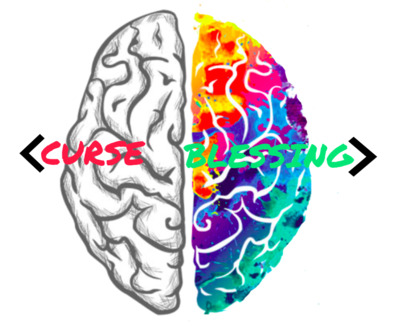LATEST POST
HR
Cultivating a Values-Driven Workplace: The Key to Successful Hiring and Retention
Introduction:
In the dynamic landscape of modern workplaces, where skill sets and competencies are highly valued, there's a growing recognition that something deeper lies at the heart of a company's success: its core values. These guiding principles serve as the compass that directs organizational culture, shapes decision-making, and influences how employees interact with one another and the world around them.
The Significance of Core Values:
At the core of every thriving organization are the principles and beliefs that define its identity and set the tone for its actions. These values articulate what the company stands for, how it conducts business, and the behaviors it expects from its employees? They serve as the foundation upon which a company's culture is built, guiding individuals in their daily interactions and shaping the collective identity of the organization.
Core values of any organization represent its most pressing priorities, beliefs, and driving forces.
Value-Based Hiring:
In recent years, there has been a noticeable shift towards value-based hiring – a recruitment approach that places a strong emphasis on assessing candidates' alignment with the company's core values. While technical skills and experience remain crucial, recruiters and HR professionals increasingly recognize the importance of evaluating candidates based on their behavioral traits and cultural fit.
During the hiring process, employers may utilize various strategies to gauge a candidate's alignment with the company's values. This can include asking behavioral interview questions that prompt candidates to share examples of how they have demonstrated the organization's core values in previous roles or personal experiences? Additionally, involving current employees who embody the company's values in the interview process can provide valuable insights into a candidate's potential cultural fit.
Fostering a Values-Driven Culture:
More often than not, Recruiters and HR tend to miss looking for the basic behavioral traits in a candidate because of hiring deadlines and pressure. But times are changing and now, the practice of value-based hiring is growing in popularity and so it's important to acknowledge the significant role that they play in influencing this process.
Employers should ensure they hire candidates who are well-suited for the job by asking behavioral questions during HR interviews to assess how candidates handle various situations. They should then evaluate these responses and see if they align with the company's values. This will help employers find candidates who not only possess the required skills but also fit well with the company's culture and principles.
This can be one way of how a company can make a difference from others in their hiring process.
By cultivating a values-driven workplace, organizations can create an environment where employees feel a sense of purpose, belonging, and fulfillment. When employees' personal values align with those of the company, it not only enhances engagement and productivity but also fosters a deeper sense of loyalty and commitment.
Finally, I believe that any company practicing these values in their work schedules and processes to retain talent.
Values-Based Scenarios:
During the interview process, present candidates with real-world scenarios or case studies that reflect your company's core values. Ask them how they would approach and handle these situations based on those values. This allows candidates to demonstrate their understanding of the values in practical contexts.
And / OR
Let the candidate narrate a real life incident from their personal or professional lives that exemplifies any of the core values.
And / OR
Collaborative Interviews: Involve current employees who exemplify the company's core values in the interview process. They can participate in panel interviews or meet with candidates individually. Their input can provide valuable insights into how well a candidate might align with the existing culture.
HOW to drive the program?
1. Define Core Values Clearly: Ensure that your company's core values are well-defined and understood by both current employees and potential candidates. Make sure they are clear and specific.
2. Interview Questions: Develop interview questions that assess a candidate's alignment with your core values. Ask behavioral questions that prompt candidates to provide examples of how they have demonstrated those values in their previous roles or personal lives?
3. Behavioral Assessments: Consider using behavioral assessments or personality tests that can help identify candidates whose values align with the company's. These assessments can provide insights into a candidate's natural inclinations and tendencies.
4. Reference Checks: When conducting reference checks, inquire about the candidate's alignment with core values in their previous roles. Ask referees about situations where the candidate exhibited the company's values.
5. Run some employee recognition programs in the company: Core Values/Wrist Band, others and award them.
6. On boarding and Induction: Once a candidate is hired, ensure that the on boarding process includes training on the company's core values and how they are put into practice within the organization?
7. Performance Reviews: Incorporate core values into performance reviews and evaluations to reinforce their importance throughout an employee's tenure.
8. Put up posters in office, print T shirts/pens, etc on Core Values.
Conclusion:
In conclusion, the significance of core values in shaping organizational culture, driving recruitment decisions, and fostering employee engagement cannot be overstated. By embracing a values-driven approach to hiring and living by those values in daily operations, companies can create a workplace where employees thrive, customers are delighted, and the organization as a whole achieves sustainable success in the long term.
IT Architecture
A concern of Enterprise Architecture

Cut “Cross Cutting” concerns, A concern of Enterprise Architecture.
Most of the big organizations, going through a transitioning phase towards digital transformation, are facing ‘cross cutting concerns’ in varying degree and the scope of concerns are wide-
a. Logging & Tracing.
b. Monitoring & Operational Dashboard.
c. Error & Exception Handling.
d. CICD & DevOps.
e. Appification.
f. API-fication.
g. Test Automation.
h. BRMS.
i. Incident Management.
j. Code Review & Quality Management.
k. Service Catalog.
l. IT Vendor & Supplier management.
m. Self-service portal.
n. Big Data Management, Analytics & Reporting.
o. Release, Change & Configuration Management.
p. Knowledge Management.
q. Open Source.
r. IT Governance & Standardization.
s. Security
t. More..
The list is long but, the questions are?
1. Are organizations ready to recognize and accept it as a multi-layer concern (from an architecture point of view) and is not limited to one department or to one domain in an organization?
2. If organizations accept it then, are they ready to resolve these concerns from all perspectives - Technically, Intellectually, Operationally, Financially, Functionally, Full-heartily, etc.?
3. Has the mindset of stakeholders changed from individual view to a collective view to tackle these cross cutting concerns?
4. Are the team of Enterprise Architects ready, up-to-date and willing to speed up ‘digital transformation journey’ by solving all these ‘cross cutting concerns’ in a proper and timely manner?
5. Are the individual department or domain ready to forward these concerns to be solved by Enterprise Architects or by the team of IT4IT, at Enterprise level?
6. Are the organizations providing enough freedom & resource to Enterprise Architects to tackle these concerns technically, financially etc. to speed up on digital journey?
7. Are the organizations taking full advantages of its vendors, partners, suppliers etc. on its expertise on the subject, experience, learning, recommendations etc.?
More…
Are we not retarding the revolution of digitization, by just focusing at narrow level, by looking the concerns in silos, by limiting the threat scope at team level, by leaving it for somebody else to solve or by solving the concerns just in pockets without thinking from a larger prospective, by keep-on delaying it, by not providing enough budget and resource to solve it, by not providing much attention or willingness to solve it, etc.?
Do you agree with me?
IT Architecture
Importance of Efficient and Effective Versioning Policy

Importance of Efficient and Effective Versioning Policy in Software Application Development!
Indeed, it is crucial to have proper, sufficient and effective versioning policy adapted throughout the lifecycle of software development for each of the relevant artefacts, services, application etc. in an organization.
The boosting factors of this thought are:
1. Agile way of working.
2. API economy, Open API etc..
3. Service oriented software environment.
4. Collaboration of Cloud and In-premise applications.
5. Automation of software testing, maintenance and support activities.
6. Adaptation of CICD.
7. Web of multi-channels and multi devices.
8. Many More….
The traditional policy of single version or no version is creating nightmare to the stakeholders of IT, in an enterprise. How does it helps? Below are some of the benefits reaped by organizations following efficient and proper versioning policy:
a. Better maintainability of artifacts and applications.
b. Better visibility of software portfolios, services offered and of integrated environments.
c. Greater flexibility in consumptions and offerings of services and apps.
d. Lessor manual dependency.
e. Continuous and con-current development and deployment.
f. Better lifecycle management of applications or artefacts.
g. Better collaborations with scrum teams.
h. Be ready for future.
i. Better API management.
j. Better control on service creation and management.
k. Speed-up on Software lifecycle management.
l. Effective and speedy adaptation of CICD.
m. Most important, more happy IT stakeholders.
n. Many more….
Let us not just discuss it but, just implement it! Let’s make proper and efficient Versioning Policy as a standard, across IT Industry, across organisations!
A white paper on versioning policy will be published by me next..
Readers comment are welcome!
AI
AI - A CURSE OR BLESSING

The debate is ongoing, and it reflects a healthy society where we accept the logical thinking of the majority. This has occurred with every new invention that is disruptive in nature, both to society and to human beings.
My aim here is to delve into the dichotomy of AI, exploring its potential as both a curse and a blessing for society. So, let's continue...
Why is it a curse?
-
Privacy Violation: It has the potential to misuse personal and sensitive information, compromising our privacy. Personal data could be stolen and exploited for malicious purposes such as cheating, threats, blackmail, or manipulating people's emotions. Every movement and action of individuals can be tracked and subsequently misused.
-
Work Replacement: There is a prevailing fear that AI-based automation could result in extensive job displacement by robots, machines, and applications, leading to a ripple effect on the economy and society at large. Eventually, it can affect individual human beings. Additionally, the true content creators might find themselves deprived of due credit.
-
Fake Information: AI possesses immense potential to manipulate various forms of data, including images, videos, and audio. It can generate and spread partially or entirely false information, with the capability to destabilize not only individual minds but also society, governments, and even entire states. Societies lacking awareness are particularly vulnerable to such forms of manipulation and victimization.
-
Bias & Unfair Advantage: There exists a potential for bias in AI systems, influenced by the training data they are exposed to. This bias can inadvertently provide unfair advantages to individuals, organizations, societies, or even entire states, leading to discriminatory outcomes. Furthermore, the lack of transparency in underlying algorithms or the implementation of AI may result in widespread distrust within the AI ecosystem as a whole.
-
Centralization of Power: A scenario could arise wherein an individual, organization, or state gains access to highly sophisticated AI applications. These could then be employed for centralized decision-making and managing decentralized responsibilities.
-
Ethical Dilemma: Are we morally comfortable coexisting with machines possessing human-level cognition and decision-making capabilities? Can we truly trust machine-made decisions in matters of life and death? Aren't we going to miss the human touch?
Why is it a blessing?
-
Beyond Human Limitations: AI fulfills its role in areas where human limitations exist, such as analyzing, categorizing, and classifying vast datasets with speed and precision, making data-driven decisions, detecting diseases early (e.g., cancer), achieving heightened accuracy, thwarting digital threats (like isolating spam emails), achieving greater throughput and productivity, and tirelessly monitoring and operating flawlessly. There are numerous tasks where AI excels beyond human capabilities.
-
Be Creative Against Repetitive: It enables us to channel our energy into greater creativity instead of investing our valuable time and effort into repetitive tasks. AI offers the chance to simplify processes, save time, and make things easier, allowing us to explore the world, unwind on the beach, or cherish moments with family or friends.
-
Personalized Goods & Services: AI applications can be customized to cater to individuals, offering specific goods and services based on their unique needs and requirements. This customization leads to elevated customer satisfaction. Additionally, AI paves the way for a plethora of novel goods and services, exemplified by innovations like Alexa and artificial limbs.
-
Climate Change & Disaster management: Sophisticated AI-powered sensors and systems play a crucial role in monitoring and managing environmental changes, enhancing weather forecasting, supporting conservation initiatives, and contributing to climate change mitigation. AI's involvement in disaster response includes predicting natural disasters, resource allocation, and relief efforts. Notable ongoing endeavors in this field include FEMA's Risk MAP Program, IBM's PAIRS, NASA's Disasters Program, Qatar's Artificial Intelligence for Disaster Response (AIDR), and DisasterAWARE.
-
A Boost for Multiple Industries: AI is making its mark across diverse sectors such as Healthcare, Education, Research, Retail, BFSI (Banking, Financial Services, and Insurance), Aviation, and Transportation. It aids in intricate surgeries, accelerates drug development research, improves education accessibility, facilitates virtual trials in e-commerce, surveillance for money laundering, detects insurance fraud, and enables predictive maintenance. These examples highlight how AI benefits different industries and ultimately benefits humanity.
-
Security & Safety: AI is anticipated to play a role in crime prevention and within the criminal justice system. It can expedite the processing of crime data, assess flight risks of prisoners, and even predict and prevent terrorist attacks. Certain regions are already employing online platforms to identify and respond to illegal and inappropriate online activities. Additionally, the widespread use of robots is advisable in perilous and unsafe work environments to safeguard human lives.
Balancing Act:
-
Apprehension often precedes reality: Every new disruptive invention triggers initial concerns before it becomes embraced and integrated into society. While AI is expected to reduce certain tasks performed by humans, it will also create new job opportunities. There's a sensationalized notion that it might even replace its own creators, such as IT Engineers. I've personally used ChatGPT for coding and can confirm that it's far from taking over the role of an IT engineer. It occasionally provides incorrect or inadequate information, although it's evolving continually. However, reaching a mature stage will take considerable time. Currently, it serves as an assistant to IT developers, enhancing their productivity. Consequently, the demand for programmers might decrease in the future. Yet, we're already facing a shortage of highly skilled programmers, compounded by a decreasing global working-age population. This natural supply-demand balance will adjust itself.
However, there will always be value and demand for human-generated applications, content, articles, and art. Just as we continue to use bamboo or plant-made fruit baskets despite the dominance of plastic. Rough estimates suggest that AI can save up to 40% of time and effort compared to traditional methods.
-
Transformation: Robots, machines, and automation will undoubtedly compel individuals to transition to different types of work. However, isn't this simply a part of the natural cycle? In my childhood, plowing was accomplished with the assistance of oxen or buffalo in days. Nowadays, tractors complete the task within minutes. Did those people not adapt? They not only adapted but also improved their lifestyles with less labor-intensive tasks. Continuous change (approximately 330 billion cells are replaced daily in our bodies) or transformation is a universal truth that everyone must undergo to remain relevant in the 'survival of the fittest.' world This process also offers the opportunity to reduce working hours, allowing for more quality time in other pursuits. Successful transformation requires just a well-structured strategy and planned transition.
-
Guardrails & Controls: In the face of other concerns, the notion of 'using the poison itself to neutralize the effect of another poison' is apt. AI itself can play a pivotal role in addressing issues like privacy violations, countering fake information, mitigating bias, and maintaining checks and balances of power. The most crucial and time-sensitive task is establishing comprehensive guidelines, principles, policies, procedures, regulations, guardrails, and controls to prevent AI from spiraling out of control. Thanks to the EU for spearheading this crucial initiative!
-
New Opportunities: As the saying goes, "When God Shuts One Door, He Opens Another." Just consider the doors that AI has opened: AI-based photo editing, video editing, skin analysis, disease detection, content creation, chatbots, supply chain management, marketing, medical equipment, data management, IoT, collaboration tools, personalization, intelligent process automation, recruitment processes, butler services, cleaning services, voice and image-based products and services, reporting, security devices and services, distance learning, farm management, machine maintenance, business analysis, retail operations, customer support, home automation devices, fraud detection, financial planning and forecasting, project management, threat prevention, self-driving vehicles, disaster management, weather forecasting, energy management, waste management, transportation, crime prevention, justice systems, drug discovery, and many more..
-
User Awareness: Ensuring user awareness is paramount, particularly regarding potential misinformation and potential exploitation due to user ignorance or naivety. It's vital that users comprehend the ramifications of malicious intentions from certain actors. Education should cover a range of AI tools, their capabilities, the potential for misuse, and the consequences of such misuse. Establishing a non-profit program for this purpose could prove beneficial. The voices of users or victims should be acknowledged and addressed by relevant authorities, leading to appropriate measures being taken.
-
Collective Responsibility: Maintaining a harmonious equilibrium between the threats and opportunities of AI is a joint responsibility shared by creators, users, and regulators. Creators must act as ethical and transparent AI application developers, users should be well-informed and vigilant, while regulators need to provide timely and comprehensive regulatory frameworks, alongside active enforcement and monitoring of those regulations.
Conclusion:
This debate will persist until AI becomes the new norm across all aspects of humanity. Just as ”what we feel is an opinion, and what we view is a perspective, not a fact,” it's important to view AI with a positive perspective and to embrace it with careful arms.
Throughout history, disruptive innovations and inventions like wheels, electricity, TV, the internet, atomic energy, cellphones, and more have brought initial discomfort to society.
Ultimately, whether AI is a curse or a blessing hinges on our use or misuse? Let us commit to harness its potential and make it a blessing for all of humanity. Amen!
HR
Cultivating a Values-Driven Workplace: The Key to Successful Hiring and Retention

Introduction:
In the dynamic landscape of modern workplaces, where skill sets and competencies are highly valued, there's a growing recognition that something deeper lies at the heart of a company's success: its core values. These guiding principles serve as the compass that directs organizational culture, shapes decision-making, and influences how employees interact with one another and the world around them.
The Significance of Core Values:
At the core of every thriving organization are the principles and beliefs that define its identity and set the tone for its actions. These values articulate what the company stands for, how it conducts business, and the behaviors it expects from its employees? They serve as the foundation upon which a company's culture is built, guiding individuals in their daily interactions and shaping the collective identity of the organization.
Core values of any organization represent its most pressing priorities, beliefs, and driving forces.
Value-Based Hiring:
In recent years, there has been a noticeable shift towards value-based hiring – a recruitment approach that places a strong emphasis on assessing candidates' alignment with the company's core values. While technical skills and experience remain crucial, recruiters and HR professionals increasingly recognize the importance of evaluating candidates based on their behavioral traits and cultural fit.
During the hiring process, employers may utilize various strategies to gauge a candidate's alignment with the company's values. This can include asking behavioral interview questions that prompt candidates to share examples of how they have demonstrated the organization's core values in previous roles or personal experiences? Additionally, involving current employees who embody the company's values in the interview process can provide valuable insights into a candidate's potential cultural fit.
Fostering a Values-Driven Culture:
More often than not, Recruiters and HR tend to miss looking for the basic behavioral traits in a candidate because of hiring deadlines and pressure. But times are changing and now, the practice of value-based hiring is growing in popularity and so it's important to acknowledge the significant role that they play in influencing this process.
Employers should ensure they hire candidates who are well-suited for the job by asking behavioral questions during HR interviews to assess how candidates handle various situations. They should then evaluate these responses and see if they align with the company's values. This will help employers find candidates who not only possess the required skills but also fit well with the company's culture and principles.
This can be one way of how a company can make a difference from others in their hiring process.
By cultivating a values-driven workplace, organizations can create an environment where employees feel a sense of purpose, belonging, and fulfillment. When employees' personal values align with those of the company, it not only enhances engagement and productivity but also fosters a deeper sense of loyalty and commitment.
Finally, I believe that any company practicing these values in their work schedules and processes to retain talent.
Values-Based Scenarios:
During the interview process, present candidates with real-world scenarios or case studies that reflect your company's core values. Ask them how they would approach and handle these situations based on those values. This allows candidates to demonstrate their understanding of the values in practical contexts.
And / OR
Let the candidate narrate a real life incident from their personal or professional lives that exemplifies any of the core values.
And / OR
Collaborative Interviews: Involve current employees who exemplify the company's core values in the interview process. They can participate in panel interviews or meet with candidates individually. Their input can provide valuable insights into how well a candidate might align with the existing culture.
HOW to drive the program?
1. Define Core Values Clearly: Ensure that your company's core values are well-defined and understood by both current employees and potential candidates. Make sure they are clear and specific.
2. Interview Questions: Develop interview questions that assess a candidate's alignment with your core values. Ask behavioral questions that prompt candidates to provide examples of how they have demonstrated those values in their previous roles or personal lives?
3. Behavioral Assessments: Consider using behavioral assessments or personality tests that can help identify candidates whose values align with the company's. These assessments can provide insights into a candidate's natural inclinations and tendencies.
4. Reference Checks: When conducting reference checks, inquire about the candidate's alignment with core values in their previous roles. Ask referees about situations where the candidate exhibited the company's values.
5. Run some employee recognition programs in the company: Core Values/Wrist Band, others and award them.
6. On boarding and Induction: Once a candidate is hired, ensure that the on boarding process includes training on the company's core values and how they are put into practice within the organization?
7. Performance Reviews: Incorporate core values into performance reviews and evaluations to reinforce their importance throughout an employee's tenure.
8. Put up posters in office, print T shirts/pens, etc on Core Values.
Conclusion:
In conclusion, the significance of core values in shaping organizational culture, driving recruitment decisions, and fostering employee engagement cannot be overstated. By embracing a values-driven approach to hiring and living by those values in daily operations, companies can create a workplace where employees thrive, customers are delighted, and the organization as a whole achieves sustainable success in the long term.
